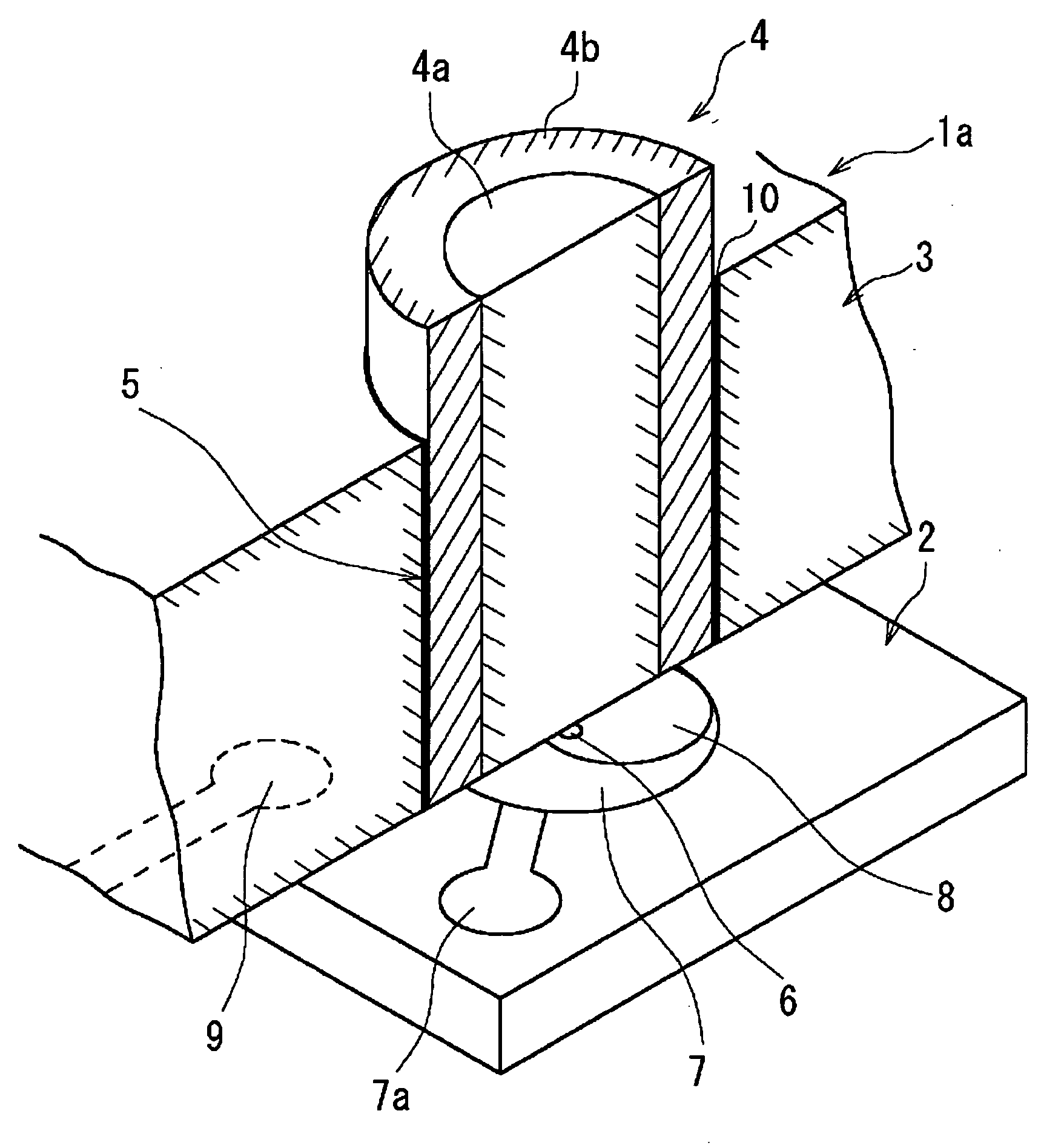Optical transceiver
a transceiver and optical technology, applied in the field of optical transceivers, can solve the problems of large increase in total cost, large increase in cost, and large increase in cos
- Summary
- Abstract
- Description
- Claims
- Application Information
AI Technical Summary
Benefits of technology
Problems solved by technology
Method used
Image
Examples
first embodiment
[0039] An optical transceiver 1a in the first embodiment is designed such that an optical integrated chip 2, in which a light emitting element and a light receiving element are formed on the same chip, is mounted as flip-chip mounting on a circuit board 3, and an optical fiber 4 optically coupled with this optical integrated chip 2 is inserted into and fixed to a via hole 5 formed in the circuit board 3.
[0040]FIG. 3 is a perspective view showing the configuration example of the optical integrated chip 2. At first, the configuration of the optical integrated chip 2 is explained. In the optical integrated chip 2, the light emitting element and the light receiving element are formed on the same chip, and a light emitting section 6 and a light receiving section 7 are formed on the surface side of the optical integrated chip 2. The light emitting section 6 is VCSEL (Vertical Cavity Surface Emitting Lasers), namely a flat light emitting element, and the light receiving section 7 is formed...
second embodiment
[0059] An optical transceiver 1b in the second embodiment is designed such that an optical component 11 for separating the paths of the transmitting light and the receiving light is inserted between the optical fiber 4 and the optical integrated chip 2. The optical component 11 is designed such that, for example, metal plating is performed on an outer surface of a glass fiber having a two-layer structure, and a refractive index of an outer layer section is made different from that of an inner layer section. Consequently, the light is confined in the inner layer section, and this inner layer section forms a first waveguide 11a. Also, the outer layer section forms a second waveguide 11b. Thus, a total reflection film 11c is formed on the outer surface of the optical component 11 by the metal plating and the like, and the light is confined. Consequently, the optical component 11 is configured such that the light passed through the first waveguide 11a and the light passed through the se...
third embodiment
[0073] An optical transceiver 1c in the third embodiment is designed such that an optical component 12 for separating the paths of the transmitting light and the receiving light is inserted between the optical fiber 4 and the optical integrated chip 2, and a total reflection film 13 is formed on the inner surface of the via hole 5. In the optical component 12, for example, a total reflection film 12a is formed around a glass tube by metal plating. Then, a first waveguide 12b in which the light is confined is formed on the inner surface of the total reflection film 12a.
[0074] The configuration of the optical integrated chip 2 is as described in FIG. 3. Also, the via hole 5 into which the optical fiber 4 is inserted is penetrated and formed in the circuit board 3. The total reflection film 13 is formed on the inner surface of this via hole 5, for example, by metal plating. A diameter of the optical component 12 is smaller than a diameter of the via hole 5. A gap through which the lig...
PUM
 Login to View More
Login to View More Abstract
Description
Claims
Application Information
 Login to View More
Login to View More - R&D
- Intellectual Property
- Life Sciences
- Materials
- Tech Scout
- Unparalleled Data Quality
- Higher Quality Content
- 60% Fewer Hallucinations
Browse by: Latest US Patents, China's latest patents, Technical Efficacy Thesaurus, Application Domain, Technology Topic, Popular Technical Reports.
© 2025 PatSnap. All rights reserved.Legal|Privacy policy|Modern Slavery Act Transparency Statement|Sitemap|About US| Contact US: help@patsnap.com



